What are the parts of an airplane?

Anatomy of an Aircraft
Have you ever wondered how many airline parts comprise that Airbus you’re boarding? Rest assured, the number of parts of a plane is considerable. In fact, today’s commercial airliners are made of literally millions of parts.
To gain a basic understanding of aircraft design, we’ll take you through the main parts of a Cessna Skyhawk. Whether you’re flying a jet with twin turbines or a single engine model, you’ll see commonalities among aircraft parts for every type of airplane.
Both Epic-trained pilots and mechanics learn the meaning of airplane parts definitions through hands-on training. Proper aircraft maintenance is critical, and learning how to fly or maintain aircraft starts with knowing the parts.
The following diagrams will allow you to view the basic structure and design as an introduction to the parts of an airplane. The parts of a plane are basic knowledge for all pilots. Whether you fly a Cessna 172 Skyhawk or a Boeing 747, pilots must know the main sections and parts of an airplane.
The Main Sections of an Airplane
Airplanes are not all alike, but they are comprised of basic components. The main sections of an airplane include the fuselage, wings, cockpit, engine, propeller, tail assembly, and landing gear. Understanding the basic functions of how these parts interact is the first step to understanding the principles of aerodynamics.
What is the fuselage?
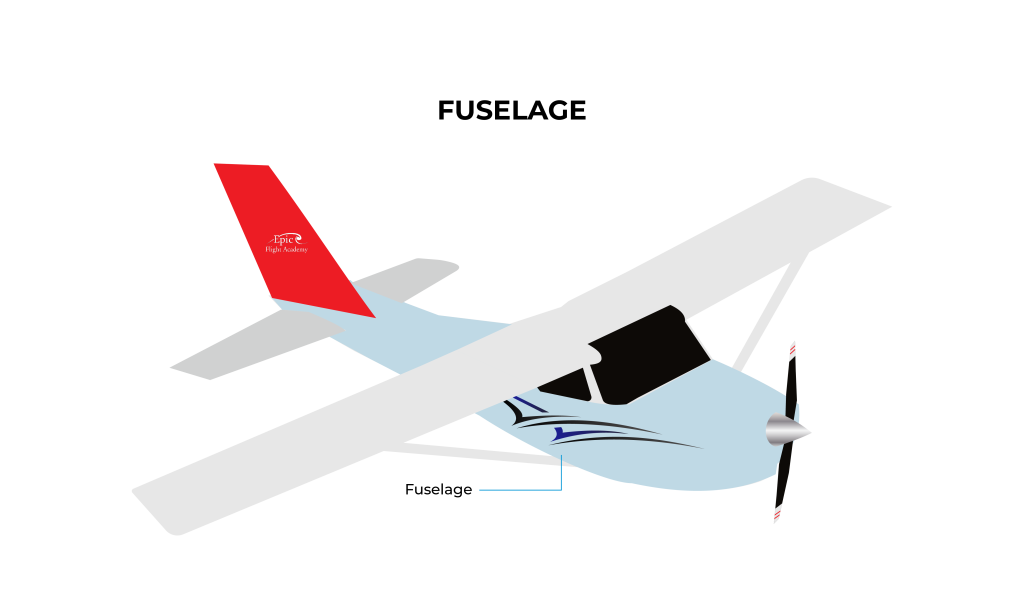
The fuselage is the main section, or body, of the airplane. (If “fuselage” sounds like a French word to you, you’re right. That’s because the French word for “spindle-shaped” is fuselé.) This is where you’ll find passengers, cargo, and the flight crew. The fuselage is the foundation for the structure of the aircraft. The tail number, which identifies each plane, is often located at the rear of the fuselage near the tail.
What are the wings?
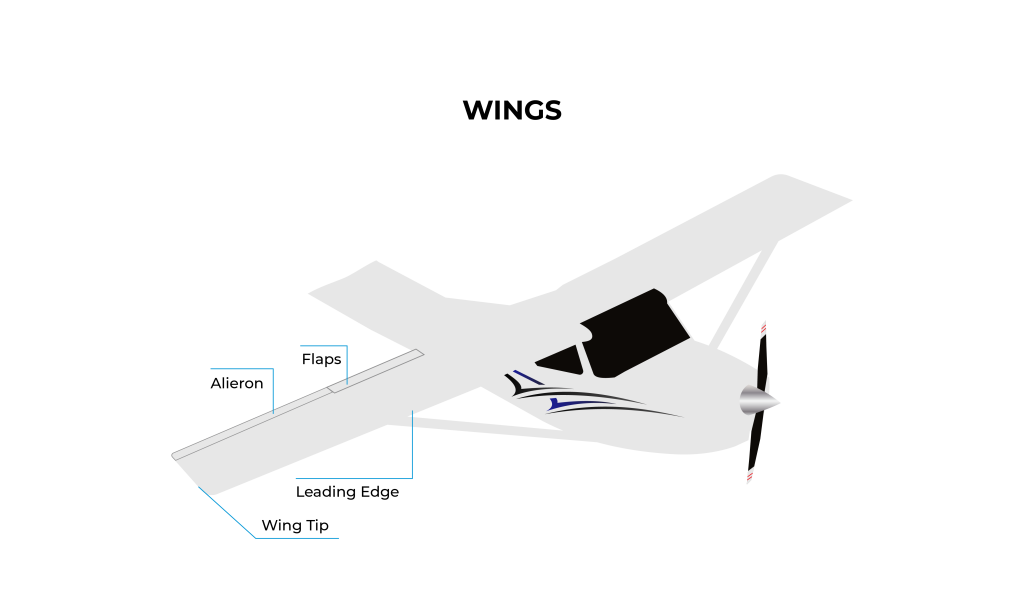
The wings of an aircraft serve the same purpose as the wings of a bird, hence their name. Airplanes are considered fixed-wing aircraft. Helicopters are rotary-winged. A plane is capable of flight because its wings provide lift. The shape of the wings and the plane’s speed create lift as it moves forward. Wings include ailerons and flaps. “Aileron” is another French word. It means “little wing” or “fin.” Pilots use ailerons in pairs to control the airplane’s roll or bank.
Flaps reduce the stalling speed of a wing at a given weight. The leading edge of the wings faces the front of the plane. Likewise, the trailing edge of the wing can be defined as the back edge that includes the aileron and trim tab. Some wings are fixed high on the plane above the fuselage and known as high wing aircraft. Low-wing aircraft are planes on which the wings are installed lower than halfway up the fuselage.
What is the cockpit?
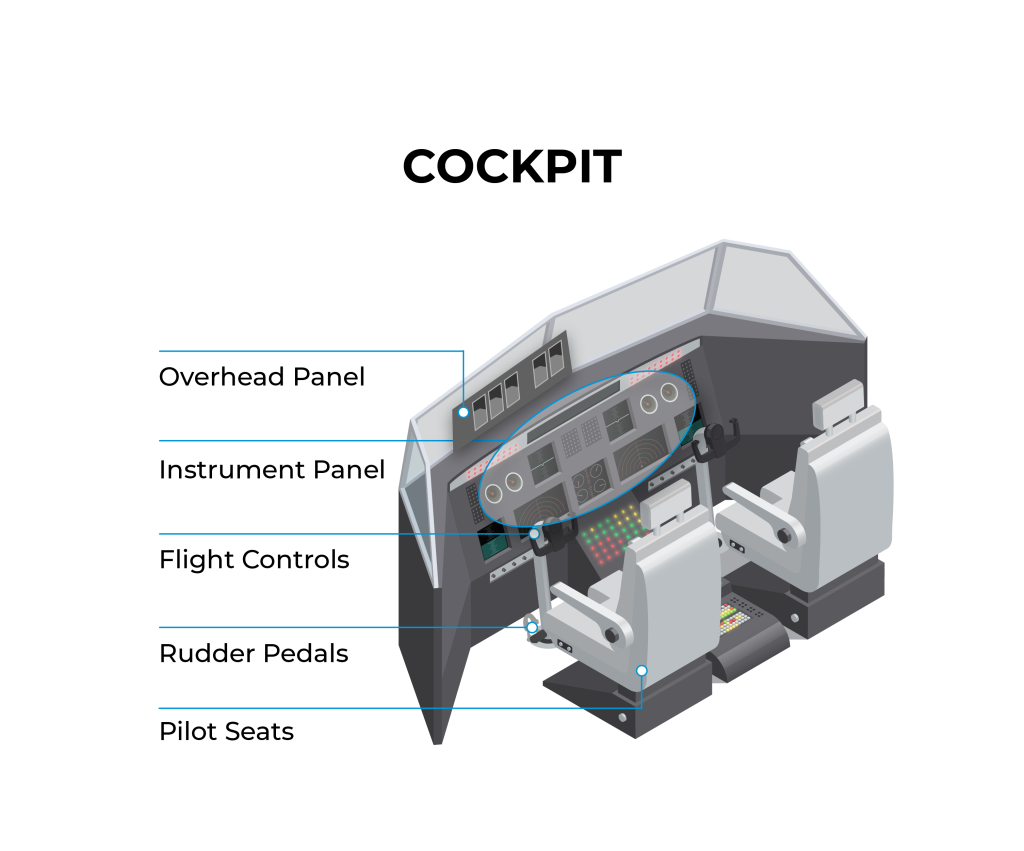
The cockpit of an airplane is also called the flight deck. This is where the pilot controls the aircraft. The cockpit includes a seating area for the flight crew, flight instruments, avionics, audio/radio communications, and flight controls. Electronic flight instruments include a multi-function display (MFD). Pilots use MFD to control heading, speed, altitude, altimeter, etc. The Primary Flight Display (PFD) typically includes attitude indicator, airspeed, heading, and vertical airspeed indicator. A navigation display (ND) provides route information, such as waypoints, windspeed, and wind direction.
A flight management system (FMS) includes details about the flight plan. A transponder, which shows the planes location to Air Traffic Control (ATC), is also located in the cockpit. A glass cockpit features electronic flight instrument displays. These are usually large LCD screens instead of the traditional style of analog dials and gauges. Epic’s entire fleet contains glass cockpits, because the airlines require pilots to be experienced in glass cockpits. You will find dual controls in Epic’s fleet. Instructors and flight students both have access to these controls.
What is the airplane engine?
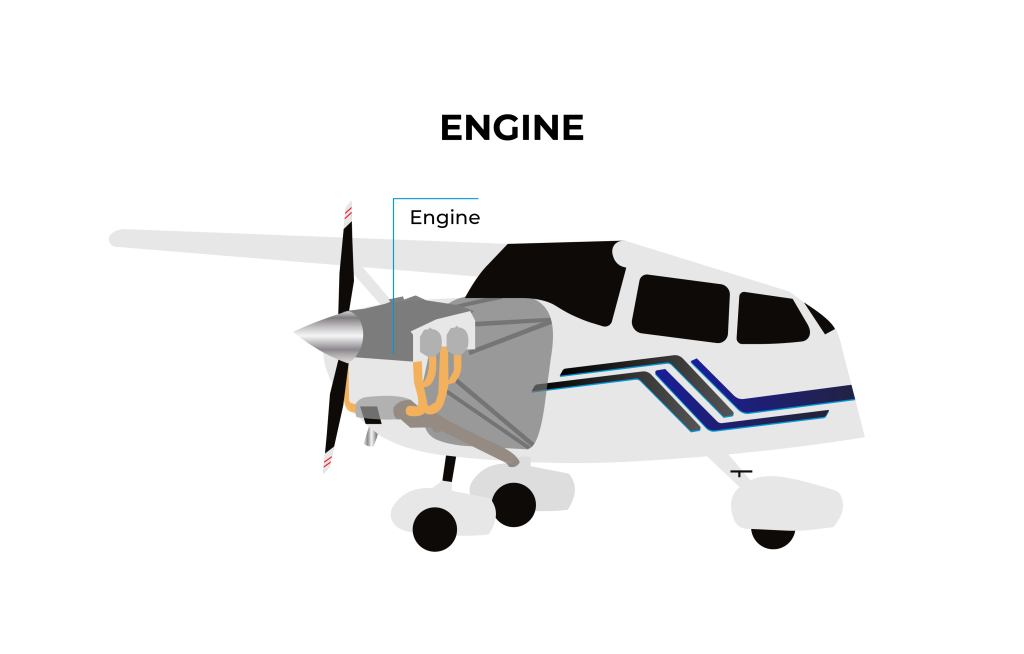
An aircraft engine, or aero engine, is the power source for a plane. Most are either piston engines or gas turbines. Some drones, or unmanned aerial vehicles (UAV), have used electric motors. There are many manufacturers and models of engines. Each is designed for specific aircraft, whether large or small. Manufacturers recommend an engine overhaul at specified times after an engine has flown a certain number of hours.
What is a propeller?

A propeller is an aerodynamic device that converts rotational energy into force. This force propels the airplane forward. This creates thrust that is perpendicular to its plane of rotation. Propellers have two or more blades. Propeller blades are spaced evenly around the hub. They are available in either fixed pitch or variable pitch configurations.
What is the tail, or empennage?
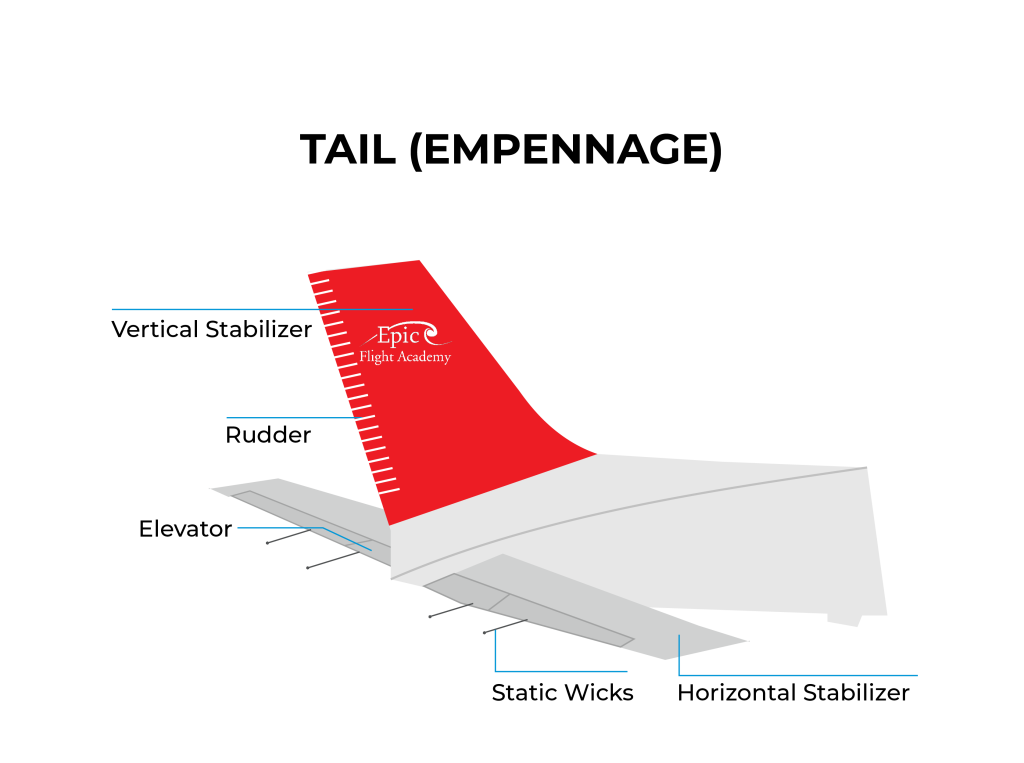
The empennage, also called the tail or tail assembly, is located at the rear of an airplane. The tail provides stability during flight. This is very similar to how feathers on an arrow provide stability. In fact, if “empennage” sounds French, it’s because it is. The French word empenner, which means “to feather an arrow,” Is the source for this word. The tail assembly consists of the vertical stabilizer, rudder, elevator, horizontal stabilizer, and static wicks.
What is the landing gear?
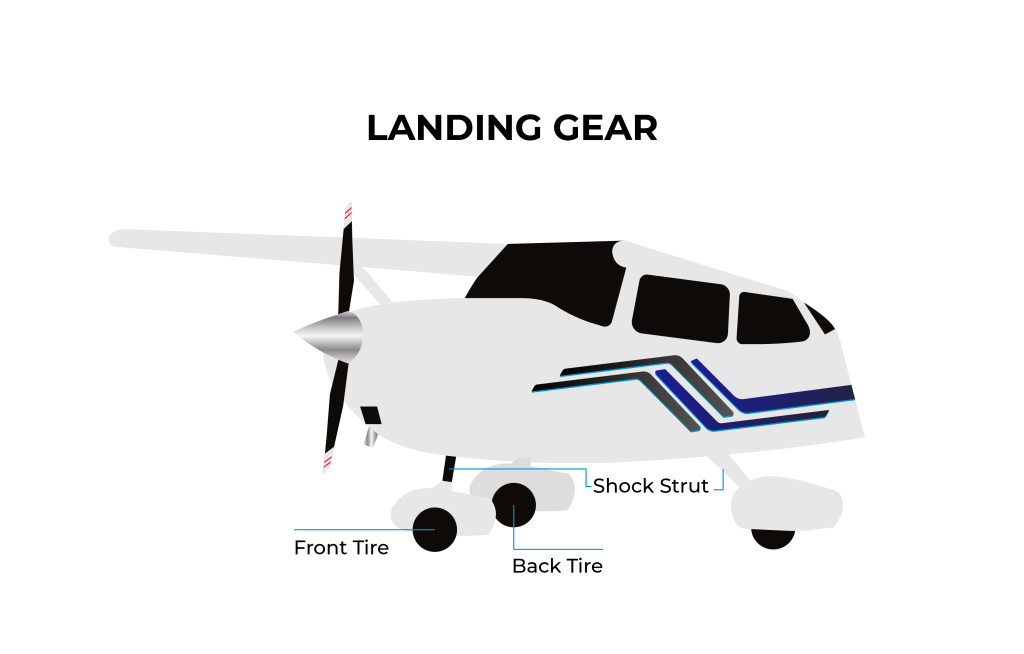
The landing gear is the undercarriage of an airplane. Pilots use landing gear for both takeoff and landing. The landing gear supports the plane when it is on the ground. Landing gear allows the plane to take off, land, and taxi without damage. Most landing gear have wheels. However, some aircraft use skis or floats to operate on snow, ice, or water. Faster aircraft, such as many twin-engine or jet aircraft, have retractable landing gear. After takeoff, pilots stow the folding landing gear to reduce drag during flight.
Would you like to watch our video on airplane parts instead?
It is important for pilots and aircraft mechanics to learn the parts and their functions. We also encourage you to learn aviation terminology. This basic knowledge provides the foundation for becoming a pilot or aircraft mechanic. Want to learn more about the parts of an airplane? Take a virtual tour in an Epic hangar with Captain Judy Rice to see all of the parts of an aircraft.
